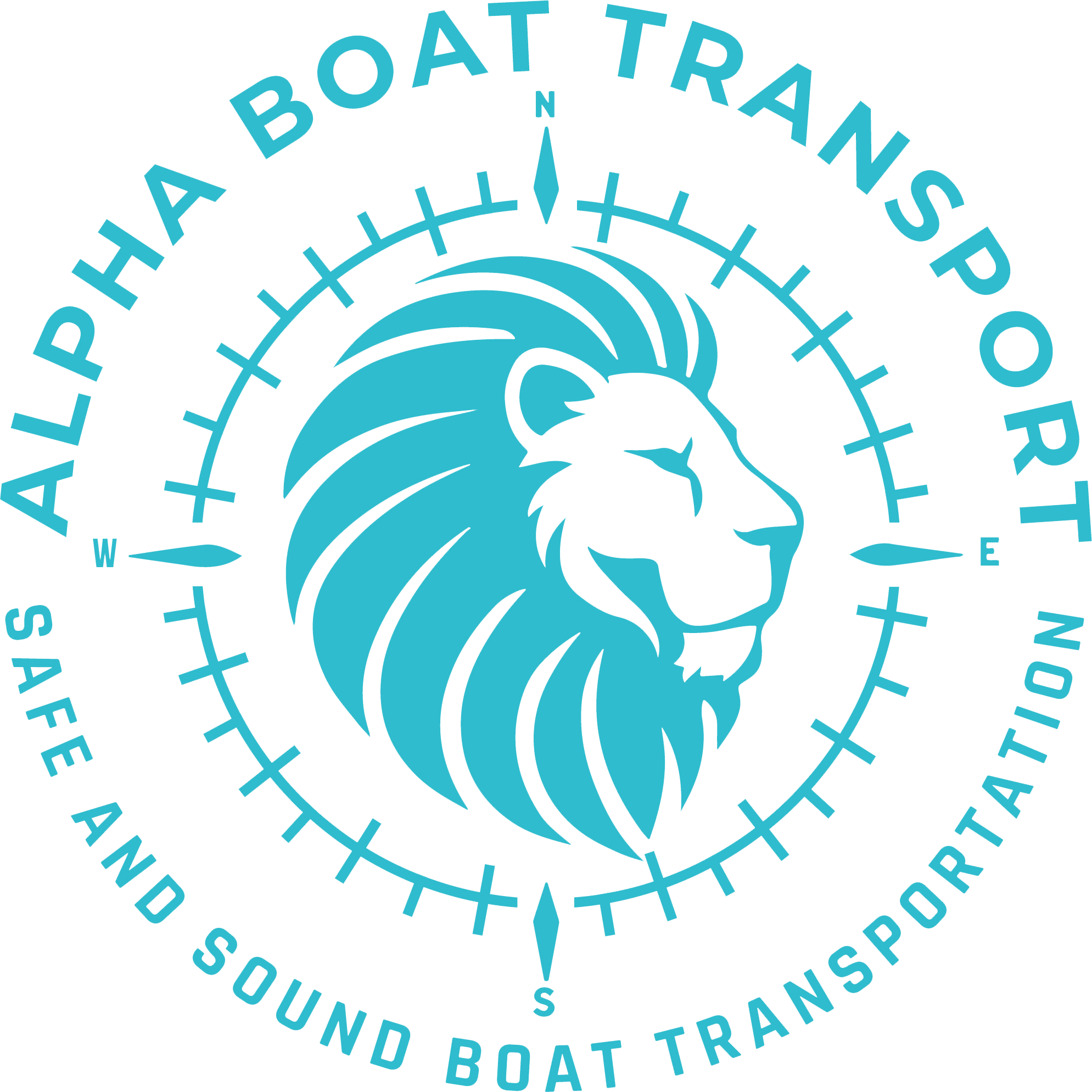The 2025 Clampdown: What Changed Overnight?
Here’s the scoop. States like Illinois and Ohio have put down the hammer—effective July 2025, they’re fully enforcing the federal 80,000-pound limit for gross vehicle weight… with no exceptions for boats over a few inches too wide or a thousand pounds too heavy. We’re talkin’ non-divisible loads like cruisers, catamarans, and multi-deck yachts. All on the radar now.
This crackdown’s not random. With 42 percent of U.S. bridges pushing past the 50-year mark, states can’t afford structural stress just so your boat can chase summer from coast to coast. The cost of bridge repair is through the roof. So DOTs are telling transporters, “Spread the weight, tighten the paperwork, or stay parked.”
For those running cruisers boat transport plans through these states post-July? You’d better know your per-axle weight, escort vehicle requirements, permitted routes, and the wind load specs on your haul rig. One rookie mistake—like a tongue-heavy trailer—and forget it. You’re on the sideline with a DOT ticket and nowhere to turn.
More than ever, boat haulers need state-by-state precision. That’s where experienced services like long distance boat hauling pros come in.
Why Cruiser Owners Shouldn’t Assume It’s “Business as Usual”
The average beam on a cruiser yacht is around 12 feet—and loaded trailers for 35-foot vessels tip the scales over 50,000 pounds. That’s… a narrow tolerance when states are now imposing strict 20,000-pound axle caps. Trust me—as someone who’s trailered through the Alleghenies with crosswinds ripping at 30 knots—weight distribution isn’t a luxury. It’s the make-or-break factor in getting your vessel transported without fines or failure.
And that’s just the tech side. Add in permit delays, restricted hours on interstates, and holiday weekend bans on oversize moves? Forget it. Don’t even get me started on Pennsylvania’s paperwork. You want the vehicle moving? You need someone who knows the game, calls the route checkers by name, and has the certified pilot car drivers logged before you finalize dates.
That’s the reassurance folks find when they lock in with transport leaders from top-rated boat transport companies navigating these new regulations daily.
Permit Puzzles: The Regulatory Maze of 2025
Here’s what the rule book doesn’t tell you: it’s not just about max weight. States like New York and Indiana are tightening how fast permits are issued—and trust me, nobody’s tracking your application speed like they should. Ever try crossing western Pennsylvania on a Friday evening in July? Good luck. Without the right time-stamped DOT authorization, you’re chained up until Monday morning.
- New width limits: Oversize width permits are now shorter in duration, some dropping from 5 days to 3 days
- Weekend bans: Saturday-Sunday moves forbidden in 10+ states during summer season
- Escort creep: More states requiring two pilot cars for beams over 10 feet
Bottom line? This isn’t your uncle’s interstate yacht tow anymore. Alpha Boat Transport’s regulated boat transport services map out route legality down to the intersection, dodging construction choke points and DOT “surprises” that tank rookies.
How Yacht Owners Are Getting Ahead of the Curve
I was cracking espresso with a Florida canal captain last week—he’s moving three 42-footers north this season. His take? “If you ain’t weight balanced to the axle and booked six weeks out, you’re toast.” He’s not wrong.
What’s working for seasoned movers right now:
- Transport-specific hull prep: Shrinkwrapping with airflow flaps, arch disassembly for clearance
- Axle-balanced custom trailers: Tailored for triple-axle dispersal, even on uneven terrain
- Pre-cleared permit & pilot teams: Saving days on reroutes and rejections
It’s these proactive moves—before you lift the keel off its cradle—that save your wallet from wrecking on hidden detour delays and compliance fines.
Working with vetted services like specialty boat hauling teams with a national footprint and state familiarity isn’t just smart. In 2025, it’s essential.
The Truth About Insurance, Trailers, and Liability No One Tells You
Let me tell you something most haulers skip in their quote: their insurance often ends at the axle hub. You ding a marina awning on arrival? That’s likely on your dime. Worse—some insurers deny claims during “gray area” transit situations—aka that moment you’re stuck overnight in Ohio and some drunk driver sideswipes the trailer.
- DOT liability coverage caps: Minimums don’t always match yacht value
- Exclusion clauses: Many won’t pay out if route was not pre-filed
- Your marine policy? Usually null during overland transport
This is why Alpha Boat Transport’s motor yacht transport checklist includes carrier insurance audits, co-signed route plans, and on-road communication logs between pilot cars and lead trucks. No guesswork. Just verifiable coverage in black and white.
From Miami to Seattle: A Route Rethink for 2025 and Beyond
The days of punching “Seattle” into your GPS and going are over. With the 2025 rule shift, longer—but safer—routes through compliant states may beat the “shortest” path every time. You get bridge-approved access in states like Tennessee and Kansas… but lose days trying to squeeze through West Virginia weight checks or deal with Missouri’s Sunday ban.
True transport strategy in 2025 means road-legal routing. That’s where integrated logistics partners such as Texas-certified boat transport teams shine. They scan road condition reports, weight station trigger zones, and even wind forecast data to plot load-safe corridors, not just straight lines.
And yeah—clients working with Alpha Boat Transport report a 91% on-time delivery rate in cross-country moves even during seasonal DOT crackdowns. That’s not luck. That’s legacy operations done right.
Expert Insights on Catamaran and Pontoon Transport Under New Rules
Two hulls means double the trouble. Especially when each pontoon or catamaran hull length adds width and unequal weight. With DOTs examining axle pressure more than ever, catamaran owners need custom cradle rigging for lawful weight spread and height tolerance.
One captained haul from North Carolina last season ran into a six-day delay because the custom frame was two inches taller than the state maximum allowance. Cost the owner $1,200 in docking fees and a Marina tantrum.
Teams like Alpha’s catamaran shipping specialists build to-tolerance frames based on hull specs, not just class assumptions. Because “one-size-fits-all” won’t fly with what’s coming next.
Frequently Asked Questions
What are the new weight regulations for cruisers boat transport in 2025?
States like Illinois and Ohio are enforcing strict 80,000-pound gross vehicle limits, capping per-axle weight at 20,000 pounds. These rules directly impact oversize boats like cruisers, which often require multi-axle trailers and DOT-permitted routing.
How can I avoid fines during boat hauling?
Ensure your cruiser is loaded with balanced axle distribution, pilot cars are properly certified, and permits are secured through compliant routing. Teams like Alpha Boat Transport specialize in avoiding transport delays and DOT fines.
Is my boat policy enough during transport?
Not always. Most marine policies exclude overland events. That’s why it’s critical your hauler carries on-road liability insurance with verified coverage levels—especially for cruisers boat transport through multiple states.
What’s the best way to transport a pontoon boat now?
Pontoon boat transport under new 2025 rules demands exact frame spacing, width permits, and rear escort in many states. Check transport checklists to prep your haul legally and safely.
When is the best time to transport a cruiser?
Avoid holiday weekends and peak summer blackout dates. Book at least 4-6 weeks out to handle permit processing and ensure your haul avoids newly increased penalties for oversize travel restrictions.
Are there safer states to transport boats?
Yes. States like Texas, Tennessee, and Kansas currently offer better DOT cooperation and flexible scheduling for cruisers boat transport. Avoid regions with strict bridge weight enforcement or weekend bans.
Do I need escort vehicles for my boat move?
If your boat exceeds 10 feet in width or hits certain weight thresholds, most states will require one or two escort vehicles. Alpha Boat Transport coordinates pilot car support in all required jurisdictions seamlessly.

